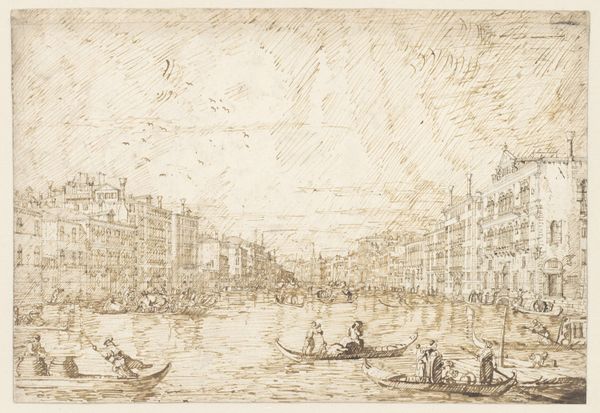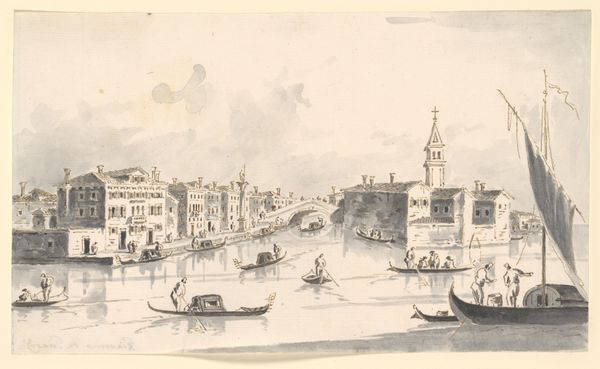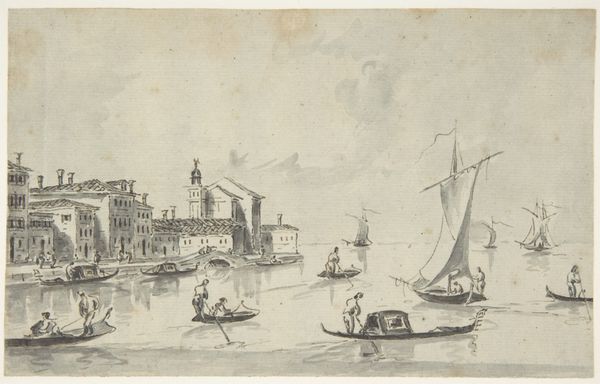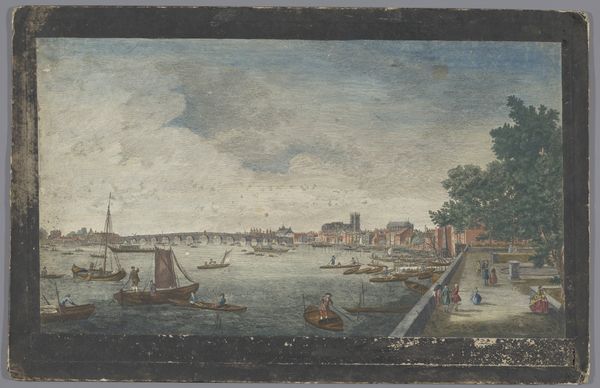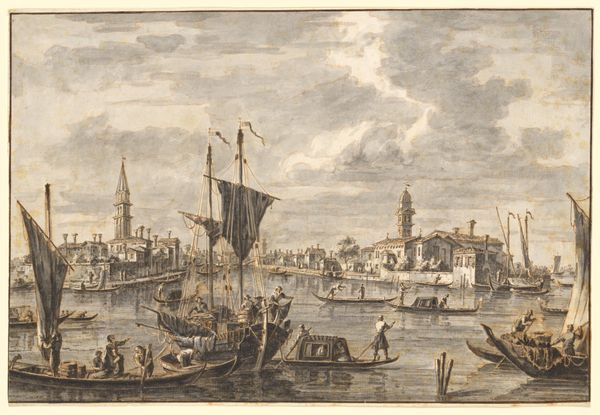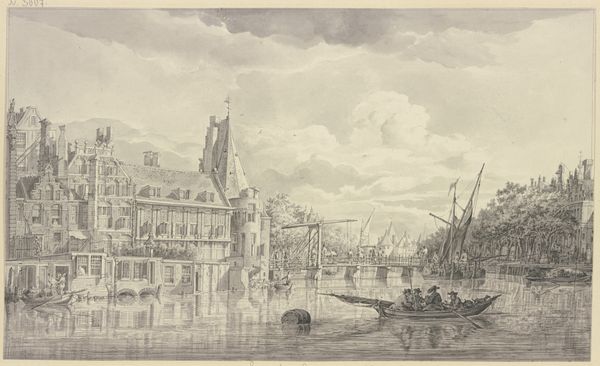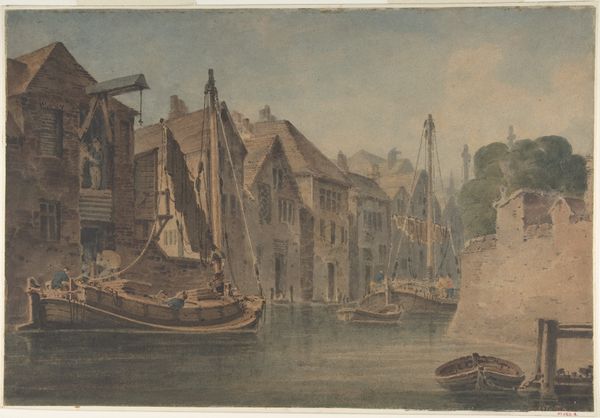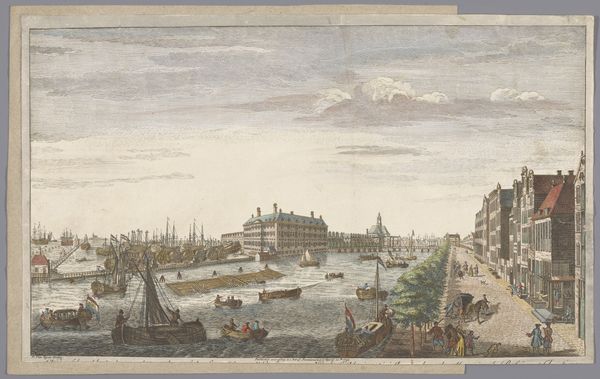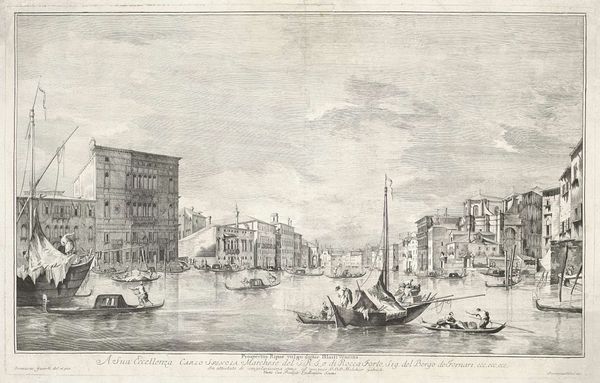
The Grand Canal Looking Toward the Salute and the Dogana c. 1770s
0:00
0:00
Dimensions: overall: 29.3 x 50.5 cm (11 9/16 x 19 7/8 in.)
Copyright: National Gallery of Art: CC0 1.0
Curator: Here we have "The Grand Canal Looking Toward the Salute and the Dogana" from around the 1770s, attributed to Francesco Tironi. It's an ink and wash drawing on paper. Editor: Immediately, the greyscale palette creates a sense of quiet solemnity. The architectural details, even in this medium, are wonderfully precise. Curator: Indeed. The ink and wash technique lends itself well to capturing the texture of the buildings and the movement of the water. Think about Venice at this time. Tironi wasn't just depicting a pretty scene; he was showing a city dependent on waterborne trade and transport, the lifeblood of the republic, shaped by and shaping society. Editor: Agreed, the repetition of forms is interesting here – the arches of the buildings mirrored in the curves of the boats, creating a visual echo. Curator: Absolutely, and consider the paper itself. It was handmade, likely in a local mill, by laborers contributing to a burgeoning industry fueled by the demand for art and record-keeping. These visual scenes provided consumers with social signals. Editor: Yet there's something about the perspective that draws the eye inexorably towards the vanishing point, focusing the gaze and guiding it through the city's waterways. Curator: Look closely. The gondoliers, are shown actively working and facilitating everyday transport; it emphasizes the essential labor often romanticized or overlooked in grand depictions of Venice. The consumption of travel. Editor: You make an important point. Despite the evident labor represented here, I think there's also a certain serenity captured by the subtle gradations of light and shadow that give depth and volume to the architecture. Curator: It’s that interplay between function and perception that fascinates. Tironi offers us a visual document and artifact from this period. Editor: I see your point! Thinking about composition, I realize the sky occupies almost half of the frame and that is certainly saying something about how the city interacts with nature. Curator: Viewing it with these different interpretations enriches our insight and emphasizes the relevance of the work. Editor: It truly provides new ways of seeing and understanding the past, adding a vibrant lens for analysis.
Comments
No comments
Be the first to comment and join the conversation on the ultimate creative platform.

